Michael Pryor is the co-founder of Trello, the collaboration tool used by millions to organize and prioritize projects using boards, lists, and cards. He’s also the co-founder of Fog Creek Software for Project Management; he currently lives in Brooklyn with his wife and two daughters.
Show Notes:
If you were stranded on a desert island, what three items would you want to have with you?
Snorkel fins as I’m not such a great swimmer, a dog to keep me company and a guitar which would take me a long time to learn.
What is the Unique Selling Proposition of Trello?
Persons were using sticky notes on their walls. Historically we had built a lot of tools for a much more structured project management and we were thinking about how easy it was for people to use these sticky notes. It helps them organize their thoughts. There is something about being able to see it in front of your face. We tried to map that. It’s not like a digital sticky note but it is taking that metaphor into the software world. You create these boards, you put your digital sticky notes, you organize them into lists so people can see where you are, where you were and where you are going. It basically gives you a map for what you’re working on.
Did you know this would have been a winner?
We spent a lot of time building software tools for other developers and this was one of the first tools we build where we wanted to build something for a much wider and broader audience. It was a big bat for us. We thought of building a software that 100 million people can use and it seemed ridiculous at the time. Now we’ve had 20 million people signed up to use Trello.
At the time, we put it out there and we launched it Tech Crunch Disrupt. We told people about it at the competition that we came in second. The huge spike in sign-ups came from that. Those who knew us at the time weren’t very technical in nature. People were writing blogs on how they use Trello to plan their wedding, run their marketing campaign and recruit people for their teams. These are examples that we hadn’t thought of before-hand but were perfect examples of all the different ways that you could use this application. Persons were writing these blog posts on their own without us asking them to. That’s when it started to click that we’re on to something here. These people are so excited about what we are doing that they are willing to market to their own channels and tell their friends and the people that follow them about this product without us even getting involved. That’s 20 million people have been word of mouth.
What were the thoughts that went through your mind during the competition, recognizing you did not come in first place?
This was about 5 or 6 years ago. We had a different story than just being at the completion. We had been making software and had a software company for 10 years before that and this was one of the products that we made. We were funding the development of Trello through the sales of some of the other products we were selling, unrelated to Trello. We weren’t in a typical scenario where we had to win the competition in order to get the funds to continue the company. This happened much later in our lifecycle of our software development career. Trello and Stack Overflow were joint ventures with Fog Creek. Those super successful and well know products came much later in our history.
We took a lot of the lessons learnt over the first decade and applied them. We made many different software products over the years. Some were the right product at the wrong time, or the right product marketed to the wrong people or the right idea but built in the wrong way. There were a lot of failures along the way. What seemed like an over-night success was actually a really long journey.
What were some of the lessons learnt?
If you’ve ever heard of Log Me In or Go To My PC, there were companies which allowed you to get onto a remote computer. They IPOed and became billion dollar companies on the Stock Market. If you rolled back the clock to about 9 years ago, that technology wasn’t widespread. It was hard to get onto a computer remotely. We developed a tool that enabled you to do that, it’s called Co-Pilot (copilot.com). We had built it for ourselves as we were trying to help our customers install our software on their computers and we struggled with them trying to tell us over the phone what they were seeing.
I thought, ‘if I could just see their computer and control it’, I would solve this problem. Nowadays this is pretty easy to do, back then it wasn’t easy to do. We built the tool that would enable you to do that and we marketed it to customer support agents. It was a great tool but the wrong marketing strategy. It grew and we made a lot of money off it but the people took that same idea and put a whole lot more investment into it and then market it to all IT groups, all companies. Those companies like Go To MY PC and Log Me In became huge successes. We had the right idea at the right time but didn’t market it to the right people.
When we started Trello, that was part of learning, knowing that we were going to build something to market to everybody and not just a specific, vertical tool. It is a general tool anyone can use to get on the same page with other people. One of the lessons learnt is that if you’re going after a bigger market, it’s a bigger risk; it’s much harder to get a lot of people to use your product as there is not really a category defined for what Trello is but if you can get enough people to love your product then they can tell other people about it and you have passionate fans, the passion of your fans will do the marketing for you.
Worst entrepreneurial moment?
One of the things on the journey for Trello was the project started in Fog Creek Software. After a couple years, we realized there were about four different things we wanted to do but we weren’t going to be able to do them all at the same time as we didn’t have the people to do them. We needed to hire more people. Because we were growing the product on the profits from the other things that we were selling, we were constraint. At that point, we realized we needed to get funding to accelerate the growth of Trello and hire more people because we know we have something which is working. We talked to some investors that we already knew.
We had to spin off Trello from Fog Creek. The trickiest part is that we had to make two companies. The identities of the employees of those companies got split in two. We shared the same office but it is a difficult process to go through emotionally. From the outside, it is the right business decision but there is a melancholy aspect, the end of an era.
Talk to us about emotional attachment?
It is a change you go through as you scale and grow. Not everyone is interested in that. Some people don’t want to do that. If your company is going to grow, there should be somebody who is doing that management, somebody who is scaling the company up. As CEO I did three: The first thing is, don’t run out of money, secondly recruit people ideally that are smarter than you and thirdly, keep the vision. When you’re small, you can mind mill to make decision, but as you scale the things you know in your head, you have to start to figure out how to spread that throughout the company. It is your job as the CEO to keep the vision. It is not so much about telling people what not to do but telling them what to focus on. As you grow you need some sort of metric to figure out what to focus on.
What kind of pay if forward initiative is your company invoked in?
At Trello, we had created internship in the form of Junior Developer positions in order to improve their resumes so we had a better pool of employees to choose from. Our parent company Atlassian tries to get employees to invest 1% of their salary in programmes to help entrepreneurs.
A piece of advice to persons interesting in the field of tech?
The hardest thing is to focus on the one thing. It’s not coming up with new ideas. The idea is not the thing, it’s the execution. The little steps along the way…there’s going to be the ups and the downs but it is going to happen. That’s part of the experience. Every time you fail you put it in the repository of your knowledge to help you.
Main Take-Aways:
- In order to grow, there should be somebody who is doing that management – scaling the company up.
- The right product must be marketed to the right people at the right time.
- Focus on the one thing.












